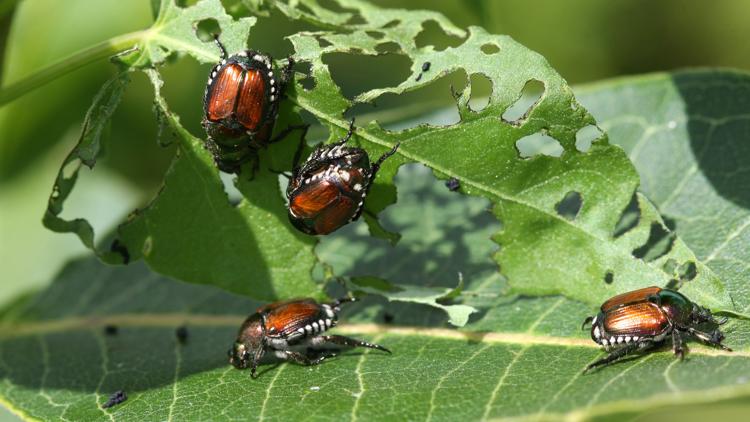LOUISVILLE, Ky. — Imagine walking out to your garden to discover your homegrown plants and flowers have been gobbled up by Japanese beetles.
Your once-lush plants now have leaves with a lace-like or skeletonized appearance. What should you do?
Over the past few weeks, the Japanese beetles have returned to Kentucky, leaving behind a path of damage.
"The Japanese beetle is probably the most devastating pest of urban landscape plants in the eastern United States," according to the University of Kentucky Department of Entomology.
How did they get here?
Japanese beetles were first found in the United States over 100 years ago, after they were accidentally introduced into New Jersey. Until 1916, the insect was only found in Japan, where it is not a major pest.
The first Japanese beetles discovered in Kentucky were found in Louisville in 1937, according to UK scholars. During the 1950s and 1960s, beetle populations increased dramatically and spread throughout Kentucky and surrounding states. Today, the Japanese beetle infests all counties in Kentucky.
These pests are typically found between June and August.
How to get rid of them
The easiest and most effective way to get rid of Japanese beetles is to remove them by hand or shake them off of your plants early in the morning when insects tend to be sluggish.
The beetles can also be killed by shaking them into a bucket of soapy water. Highly valued plants such as roses can be protected by covering them with cheesecloth or other fine netting during the peak of beetle activity.
Many insecticides are labeled for use against Japanese beetles. While many sprays work very well, other methods like insecticidal soap, extracts of garlic, hot pepper, or orange peels, and companion planting, are generally ineffective. Click here for a complete list of products that can kill Japanese beetles.
The presence of beetles attracts more beetles; therefore, if you don't let them accumulate, plants will be less attractive to other beetles.
Why you shouldn't use Japanese Beetle traps
Though Japanese beetle traps are sold in many garden centers, researchers at the University of Kentucky found the traps can actually do more harm than good.
Research conducted at UK found traps attract many more beetles than are actually caught. Consequently, susceptible plants along the flight path of the beetles and in the vicinity of traps are likely to suffer much more damage than if no traps are used at all.
If you do decide to experiment with traps, UK researchers suggest placing them far away from gardens and landscape plants.
Click here for more information on what plants Japanese beetles prefer and how to get rid of them.



